Rittal Fuses
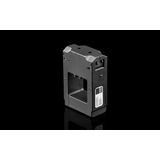
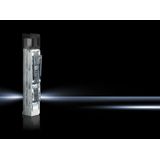
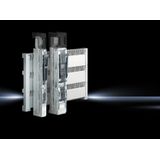
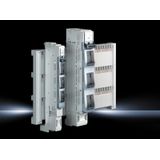
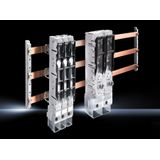
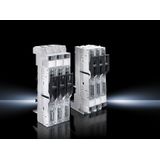
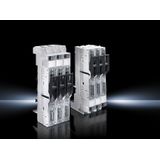
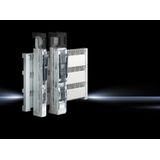
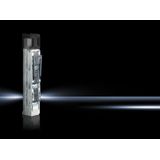
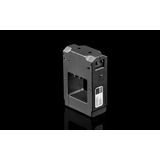
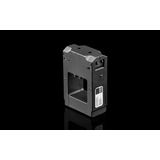
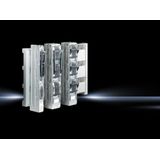
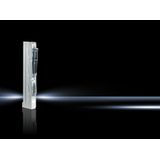
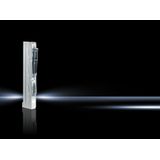
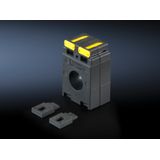
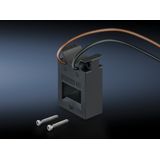
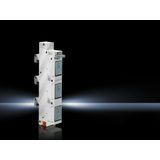
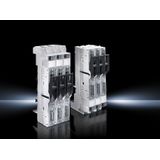
rittal fuses for panels and field circuits
Panel builders specify fuse systems when they want predictable short‑circuit behavior, easy visual checks, and fast field replacement. Within Rittal cabinets, these assemblies sit on TS35 rails or mounting plates next to contactors, PSUs, and drives, keeping protection selective and serviceable without breaking IP/EMC discipline.
rittal fuse holders product range and mounting formats
Cylindrical DIN holders for 10×38, 14×51, and 22×58 mm links, finger‑safe IP20 with captive covers and optional blown‑fuse indicators (mechanical window or microswitch). Screw or spring terminals accept 0.75–25 mm² conductors; multi‑pole ganging bars keep phases tidy.
NH bases (NH00…NH3) on plates or busbar adapters for higher currents; knife‑blade links enable fast swaps with insulated grips. Transparent shrouds preserve touch safety while allowing label visibility.
Accessories include phase barriers, rejection features to block wrong sizes, and auxiliary contacts for remote alarm when a link opens. All housings align to enclosure punch geometry for direct fitment on TS35 or backplates.
rittal fuse links technical specifications and standards
- Standards: cylindrical links to IEC/EN 60269‑2; NH links to IEC/EN 60269‑2; miniature styles to IEC/EN 60127. Coordination within assemblies follows IEC/EN 61439 practice.
- Utilization categories (examples): gG (general‑purpose cable/device protection), aM (motor circuits with contactor/overload), gR/aR (semiconductor protection), and gPV (PV DC strings). Choose per load type and disconnection needs.
- Voltage/current ratings: cylindrical typically 500–690 V AC up to 125 A (22×58); NH up to 400…630 A (frame‑dependent). DC variants available for 110–1000 V applications (check model data).
- Breaking capacity: high‑rupturing capacity (HRC) links commonly 80–120 kA at rated voltage; verify against prospective fault levels.
- I²t and let‑through: specify pre‑arcing and total I²t to protect downstream devices (contactors, drives, control PSU). Time‑current curves define selectivity with MCBs/overloads.
- Temperature & terminals: holder terminals carry torque windows (e.g., M4 1.2–1.8 Nm, M5 2.2–3.0 Nm). Apply ambient de‑rating in dense rows.
Document fuse references, curves, and tightening torques in the FAT package; it shortens future troubleshooting.
rittal miniature fuses applications and selection
Miniature formats (glass/ceramic 5×20 and 6.3×32 mm) protect auxiliary circuits, HMIs, and low‑power supplies inside doors and marshalling sections. Slow‑blow (T) variants ride inrush on transformers and capacitive supplies; fast (F/FF) suit sensitive electronics. Use enclosed, finger‑safe carriers on 22/30 mm panels for service access without opening main compartments.
For PLC racks and interface modules, prefer cartridge styles with clear markings and spare holders; keep ratings aligned with PSU datasheets to avoid nuisance opens during cold starts.
rittal cartridge fuses integration with enclosure platforms
Cylindrical and NH systems mount on TS35 rails or plates alongside contactors and relays. Feeders enter through matched gland plates; strain‑relief bars intercept mechanical load before terminals. Where EMC is critical, route screened control separate from fused mains and bond shields 360° at conductive plates. Use auxiliary microswitches on holders to drive an alarm input—maintenance teams can locate the open link quickly.
In mixed voltage cabinets, segregate DC and AC rows with partition barriers and labels; mirror layouts across bayed enclosures so crews work by habit.
rittal protection fuses selection criteria for B2B clients
- Load type & curve — choose gG for general distribution, aM for motors (with contactor/overload), aR/gR for drives/semiconductors, gPV for DC strings. Map time‑current curves to inrush profiles.
- Fault level & breaking capacity — check prospective kA at the point of installation; select links with sufficient HRC and verify assembly SCCR under IEC 61439.
- Selectivity & I²t — ensure upstream/downstream coordination (fuse vs MCB/overload) and keep let‑through below device withstand.
- Thermal & wiring — apply ambient de‑rating in dense rows; match terminal cross‑section and torque spec; avoid mixing fine‑strand without ferrules.
- Service & signaling — use blown‑fuse indication and auxiliary contacts where uptime matters; stock spare links and carriers in each cabinet
Most estates standardize one cylindrical family (10×38 or 22×58), one NH size for feeders, and a miniature line for auxiliaries—spares and training stay simple.
Advantages of working with Bankoflamps
Commercial terms align with your BOM via individual B2B pricing and formal offers. A dedicated account manager coordinates samples and logistics, and live EU‑wide stock is visible for planning. Quotes typically land in about an hour. Orders submit by EAN/MPN with clean traceability, and price lists are downloadable and kept current. You’ll see lead‑time and order‑status tracking plus purchase‑history analytics to consolidate SKUs. Trusted clients receive up to 30 days post‑payment. We also plan consolidated shipments to cut freight costs, hold prices with validity dates, and support teams in France, the Baltics, Germany, Spain, Italy, Belgium, and the Netherlands.